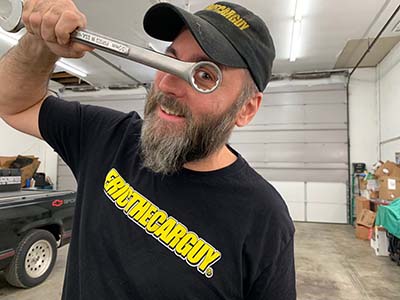I have a 2013 XC90 R Design FWD 118k miles which started giving me the ECM-P042000 Catalyst System Efficiency Below Threshold DTC in mid summer. I went through the simplest stuff first, air filter, spark plugs and oil change. I would reset the DTC and it would come back anywhere between 500 and 1200 miles (we did some long trips since then). One time it even went away on its own but the only constant or coincidence I notice was that every time the code popped up, it was within 30 seconds or so of starting the car, and only if I started driving right away, so either with the car already warm or as soon the idle comes down. If I started the car and waited a few minutes before driving off it never happened. This made me think that perhaps something was not initializing correctly those “quick” times. Along with VIDA’s instruction to start with replacing the front sensor (bank 1 I read as the passenger side), that was my next step which I completed last week with a Denso 234-9151 Air Fuel Ratio Senso. Today, about 800 miles later and following the same sequence, so having driven 400 highway miles, stopping for a bathroom break, and driving off right away after starting the car, it came back.
So when I got home with the car still warm I did some driving around with VIDA connected and graphed the values. I’ll admit that while I’m comfortable with computers, I’m a novice with cars. I’ve watched some videos but I’m not positive I captured the correct variables or if they point to something obvious. I would greatly appreciate some expertise from the community pointing me to next steps, or if I should capture different variables. Here are the screen captures with brief descriptions and thanks in advance for any help.
First/Original DTC
![Image]()
Post Oxygen Sensor Replacement DTC (earlier today)
![Image]()
City Driving Bank 1 Graph
![Image]()
Banks 1 and 2 Freeway
![Image]()
Same as above but only Bank 1
![Image]()
Bank 1 only down my street
![Image]()
Bank 2 only down my street
![Image]()
So when I got home with the car still warm I did some driving around with VIDA connected and graphed the values. I’ll admit that while I’m comfortable with computers, I’m a novice with cars. I’ve watched some videos but I’m not positive I captured the correct variables or if they point to something obvious. I would greatly appreciate some expertise from the community pointing me to next steps, or if I should capture different variables. Here are the screen captures with brief descriptions and thanks in advance for any help.
First/Original DTC
Post Oxygen Sensor Replacement DTC (earlier today)
City Driving Bank 1 Graph
Banks 1 and 2 Freeway
Same as above but only Bank 1
Bank 1 only down my street
Bank 2 only down my street






